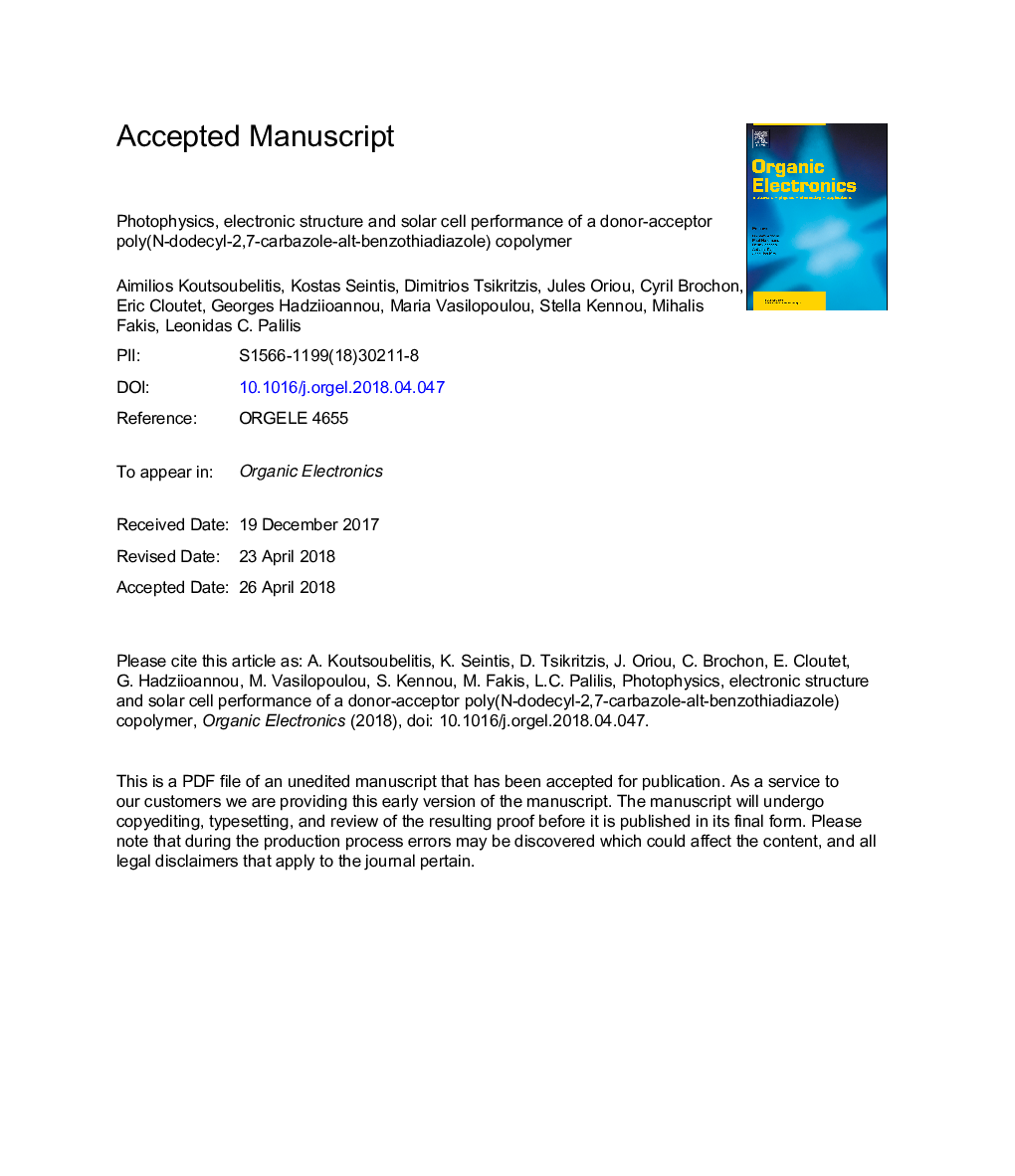| Article ID | Journal | Published Year | Pages | File Type |
|---|---|---|---|---|
| 7700087 | Organic Electronics | 2018 | 28 Pages |
Abstract
A in-depth investigation of the optoelectronic properties of a new donor-acceptor poly(N-Dodecyl-2,7-carbazole-alt-benzothiadiazole (CBZ-BT) copolymer is performed. Photoexcitation led to a broad and structureless fluorescence spectrum due to large torsional disorder in the excited state, originating from intramolecular energy transfer. A red-shift of the solution emission spectrum within less than 5 ps was found due to exciton migration and/or conformational relaxation of the polymer backbone. In films, this relaxation was faster accompanied by a reduction of exciton lifetime. Fluorescence depolarization in solutions followed the rate of spectral relaxation. In films, depolarization was faster, due to efficient energy transfer to adjacent chains and increased solid state disorder. An efficient, ultrafast, photoinduced electron transfer takes place in less than 150 fs from CBZ-BT to PC70BM. Simple architecture polymer solar cells showed relatively high open circuit voltage (â¼0.85 V) but low power conversion efficiency (â¼1.7%).266
Related Topics
Physical Sciences and Engineering
Chemistry
Chemistry (General)
Authors
Aimilios Koutsoubelitis, Kostas Seintis, Dimitrios Tsikritzis, Jules Oriou, Cyril Brochon, Eric Cloutet, Georges Hadziioannou, Maria Vasilopoulou, Stella Kennou, Mihalis Fakis, Leonidas C. Palilis,
